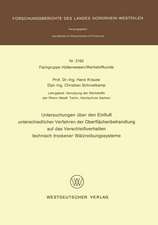Integrating Safety and Security Management to Protect Chemical Industrial Areas from Domino Effects: Springer Series in Reliability Engineering
Autor Chao Chen, Genserik Reniers, Ming Yangen Limba Engleză Paperback – noi 2022
Firstly, the book provides a dynamic graph approach to model the domino effects induced by accidental fire or intentional fire, considering the spatial-temporal evolution of fires. Then, a dynamic risk assessment method based on a discrete dynamic event tree is proposed to assess the likelihood of VCEs and the vulnerability of installations, addressing the time dependencies in vapor cloud dispersion and the uncertainty of delayed ignitions. A dynamic methodology based on dynamic graphs and Monte Carlois provided to assess the vulnerability of individuals and installations exposed to multi-hazards, such as fire, explosion and toxic release during escalation events. Based on these domino effect models, an economic approach is developed to integrate safe and security resources, obtaining the most cost–benefit protection strategy for preventing domino effects. Finally, a resilience-based approach is provided to find out the most cost-resilient way to protect chemical industrial areas, addressing possible domino effects.
This integrated approach will be of interest to researchers, industrial engineers, chemical engineers and safety managers and will help professionals to new solutions in the area of safety and security.
| Toate formatele și edițiile | Preț | Express |
|---|---|---|
| Paperback (1) | 994.54 lei 6-8 săpt. | |
| Springer International Publishing – noi 2022 | 994.54 lei 6-8 săpt. | |
| Hardback (1) | 1000.56 lei 6-8 săpt. | |
| Springer International Publishing – 31 oct 2021 | 1000.56 lei 6-8 săpt. |
Din seria Springer Series in Reliability Engineering
- 18%
 Preț: 1406.66 lei
Preț: 1406.66 lei - 18%
 Preț: 1122.56 lei
Preț: 1122.56 lei - 20%
 Preț: 1277.89 lei
Preț: 1277.89 lei - 18%
 Preț: 952.09 lei
Preț: 952.09 lei - 24%
 Preț: 1048.70 lei
Preț: 1048.70 lei - 20%
 Preț: 940.34 lei
Preț: 940.34 lei - 20%
 Preț: 987.32 lei
Preț: 987.32 lei - 18%
 Preț: 951.29 lei
Preț: 951.29 lei - 18%
 Preț: 947.02 lei
Preț: 947.02 lei - 15%
 Preț: 651.51 lei
Preț: 651.51 lei - 15%
 Preț: 635.65 lei
Preț: 635.65 lei - 18%
 Preț: 1228.44 lei
Preț: 1228.44 lei - 18%
 Preț: 1227.67 lei
Preț: 1227.67 lei - 18%
 Preț: 952.89 lei
Preț: 952.89 lei - 18%
 Preț: 1234.94 lei
Preț: 1234.94 lei - 18%
 Preț: 952.09 lei
Preț: 952.09 lei - 18%
 Preț: 1236.19 lei
Preț: 1236.19 lei - 18%
 Preț: 1322.35 lei
Preț: 1322.35 lei - 20%
 Preț: 1274.57 lei
Preț: 1274.57 lei - 15%
 Preț: 643.34 lei
Preț: 643.34 lei - 18%
 Preț: 1109.16 lei
Preț: 1109.16 lei - 15%
 Preț: 635.65 lei
Preț: 635.65 lei - 15%
 Preț: 654.62 lei
Preț: 654.62 lei - 18%
 Preț: 944.99 lei
Preț: 944.99 lei - 18%
 Preț: 953.65 lei
Preț: 953.65 lei - 18%
 Preț: 1213.16 lei
Preț: 1213.16 lei - 18%
 Preț: 956.50 lei
Preț: 956.50 lei - 15%
 Preț: 644.95 lei
Preț: 644.95 lei - 18%
 Preț: 950.52 lei
Preț: 950.52 lei - 18%
 Preț: 1233.97 lei
Preț: 1233.97 lei - 15%
 Preț: 640.06 lei
Preț: 640.06 lei - 18%
 Preț: 956.69 lei
Preț: 956.69 lei - 18%
 Preț: 940.39 lei
Preț: 940.39 lei - 18%
 Preț: 948.92 lei
Preț: 948.92 lei -
 Preț: 389.70 lei
Preț: 389.70 lei - 18%
 Preț: 943.73 lei
Preț: 943.73 lei - 18%
 Preț: 940.57 lei
Preț: 940.57 lei - 20%
 Preț: 985.03 lei
Preț: 985.03 lei - 18%
 Preț: 943.43 lei
Preț: 943.43 lei - 18%
 Preț: 1218.21 lei
Preț: 1218.21 lei - 18%
 Preț: 948.16 lei
Preț: 948.16 lei - 18%
 Preț: 948.92 lei
Preț: 948.92 lei - 18%
 Preț: 1727.24 lei
Preț: 1727.24 lei - 15%
 Preț: 638.43 lei
Preț: 638.43 lei - 24%
 Preț: 802.76 lei
Preț: 802.76 lei
Preț: 994.54 lei
Preț vechi: 1212.86 lei
-18% Nou
Puncte Express: 1492
Preț estimativ în valută:
190.33€ • 197.97$ • 157.13£
190.33€ • 197.97$ • 157.13£
Carte tipărită la comandă
Livrare economică 15-29 aprilie
Preluare comenzi: 021 569.72.76
Specificații
ISBN-13: 9783030889135
ISBN-10: 3030889130
Pagini: 184
Ilustrații: XVI, 184 p. 55 illus., 24 illus. in color.
Dimensiuni: 155 x 235 mm
Greutate: 0.29 kg
Ediția:1st ed. 2022
Editura: Springer International Publishing
Colecția Springer
Seria Springer Series in Reliability Engineering
Locul publicării:Cham, Switzerland
ISBN-10: 3030889130
Pagini: 184
Ilustrații: XVI, 184 p. 55 illus., 24 illus. in color.
Dimensiuni: 155 x 235 mm
Greutate: 0.29 kg
Ediția:1st ed. 2022
Editura: Springer International Publishing
Colecția Springer
Seria Springer Series in Reliability Engineering
Locul publicării:Cham, Switzerland
Cuprins
Safety and Security Research Related to Domino Effects in the Process Industry: The State of the Art.- Integrating Safety and Security Tactics.- Modeling the Spatial-Temporal Evolution of Fire-Induced Domino Effects.- Modeling the Spatial-Temporal Evolution of Explosion-Induced Domino Effects.- Modeling the Multi-Hazard Evolution of Domino Effects.- A Cost-Benefit Approach for Decision-Making Regarding Preventing Domino Effects.- A Resilience-Based Approach for the Prevention and Mitigation of Domino Effects.- Conclusions.
Recenzii
Notă biografică
Chao Chen is a Ph.D. candidate at Delft University of Technology. His research is focused on chemical security risk and domino risk. He gained his M.Sc. in Safety Engineering of Oil & Gas Storage and Transportation, BEng in Oil & Gas Storage and Transportation, and Bachelor of Business Management (BBM) in Business Administration from Southwest Petroleum University. He has published around 15 journal articles.
Genserik Reniers was appointed as a full professor at the Delft University of Technology, at the Safety and Security Science Group, in 2013. He is also a professor (in a part-time capacity) both at the University of Antwerp and at the Kuleuven, both in Belgium, lecturing amongst others in engineering risk analysis and risk management. He is also a director of the MOSHE Education at TUDelft. His main research interests concern domino effects, the collaboration surrounding safety and security topics, and socio-economic optimization within the chemical industry. He has extensive experience in leading research projects funded both from public and private sources. He has authored more than 200 papers in impact factor journals and has authored and co-authored, as well as edited, some 40 scientific books.
Ming Yang joined the Safety and Security Science Section at the TU Delft as an Assistant Professor on June 1st, 2020. His research develops qualitative and quantitative approaches for safety and environmental engineering and management problems in the process and marine industries. He has authored and co-authored more than 60 international peer-reviewed journal and conference papers in the field of safety, risk, and environmental engineering. In light of the author Chao Chen. Now he is a postdoctoral researcher rather than a Ph.D. candidate.
Genserik Reniers was appointed as a full professor at the Delft University of Technology, at the Safety and Security Science Group, in 2013. He is also a professor (in a part-time capacity) both at the University of Antwerp and at the Kuleuven, both in Belgium, lecturing amongst others in engineering risk analysis and risk management. He is also a director of the MOSHE Education at TUDelft. His main research interests concern domino effects, the collaboration surrounding safety and security topics, and socio-economic optimization within the chemical industry. He has extensive experience in leading research projects funded both from public and private sources. He has authored more than 200 papers in impact factor journals and has authored and co-authored, as well as edited, some 40 scientific books.
Ming Yang joined the Safety and Security Science Section at the TU Delft as an Assistant Professor on June 1st, 2020. His research develops qualitative and quantitative approaches for safety and environmental engineering and management problems in the process and marine industries. He has authored and co-authored more than 60 international peer-reviewed journal and conference papers in the field of safety, risk, and environmental engineering. In light of the author Chao Chen. Now he is a postdoctoral researcher rather than a Ph.D. candidate.
Textul de pe ultima copertă
This book provides insight into domino effects in industrial chemical sites and process industries. It is about the integration of safety and security resources to prevent and mitigate domino effects in the process industries. It explains how chemical industrial areas, comprised of various hazardous installations, are susceptible to a chain of undesired events, or domino effects, triggered by accidental events or intentional attacks and then presents solutions to prevent them.
Firstly, the book provides a dynamic graph approach to model the domino effects induced by accidental fire or intentional fire, considering the spatial-temporal evolution of fires. Then, a dynamic risk assessment method based on a discrete dynamic event tree is proposed to assess the likelihood of VCEs and the vulnerability of installations, addressing the time dependencies in vapor cloud dispersion and the uncertainty of delayed ignitions. A dynamic methodology based on dynamic graphs and Monte Carlois provided to assess the vulnerability of individuals and installations exposed to multi-hazards, such as fire, explosion and toxic release during escalation events. Based on these domino effect models, an economic approach is developed to integrate safe and security resources, obtaining the most cost–benefit protection strategy for preventing domino effects. Finally, a resilience-based approach is provided to find out the most cost-resilient way to protect chemical industrial areas, addressing possible domino effects.
This integrated approach will be of interest to researchers, industrial engineers, chemical engineers and safety managers and will help professionals to new solutions in the area of safety and security.
Firstly, the book provides a dynamic graph approach to model the domino effects induced by accidental fire or intentional fire, considering the spatial-temporal evolution of fires. Then, a dynamic risk assessment method based on a discrete dynamic event tree is proposed to assess the likelihood of VCEs and the vulnerability of installations, addressing the time dependencies in vapor cloud dispersion and the uncertainty of delayed ignitions. A dynamic methodology based on dynamic graphs and Monte Carlois provided to assess the vulnerability of individuals and installations exposed to multi-hazards, such as fire, explosion and toxic release during escalation events. Based on these domino effect models, an economic approach is developed to integrate safe and security resources, obtaining the most cost–benefit protection strategy for preventing domino effects. Finally, a resilience-based approach is provided to find out the most cost-resilient way to protect chemical industrial areas, addressing possible domino effects.
This integrated approach will be of interest to researchers, industrial engineers, chemical engineers and safety managers and will help professionals to new solutions in the area of safety and security.
Caracteristici
Provides insight into domino effects in industrial chemical sites and process industries Integrates safety and security resources in several innovative models Promotes the prevention of domino effects, developing securer, and more resilient chemical industrial areas























